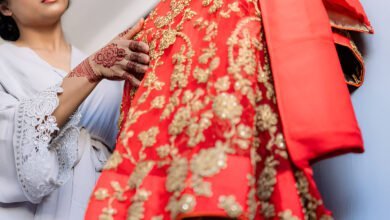Stunning Heavy Work Dupattas: Traditional Styles for Modern Women”

Heavy Work Dupatta: A Traditional Masterpiece in Indian Fashion
In the swarming Indian fashion tapestry, there are a few things as significant and attractive as dupattas. In general, it is a long multipurpose scarf that has slowly changed into one of the statement pieces in women’s dress, especially when heavy with work. In this paper, we will discuss deep on cultural, historical and contemporary implications of heavy work dupattas in India by looking at their craftsmanship and types; occasions for use; and place in modern fashion.
Bollywood Inspired Half Saree Dupatta Looks You’ll Love
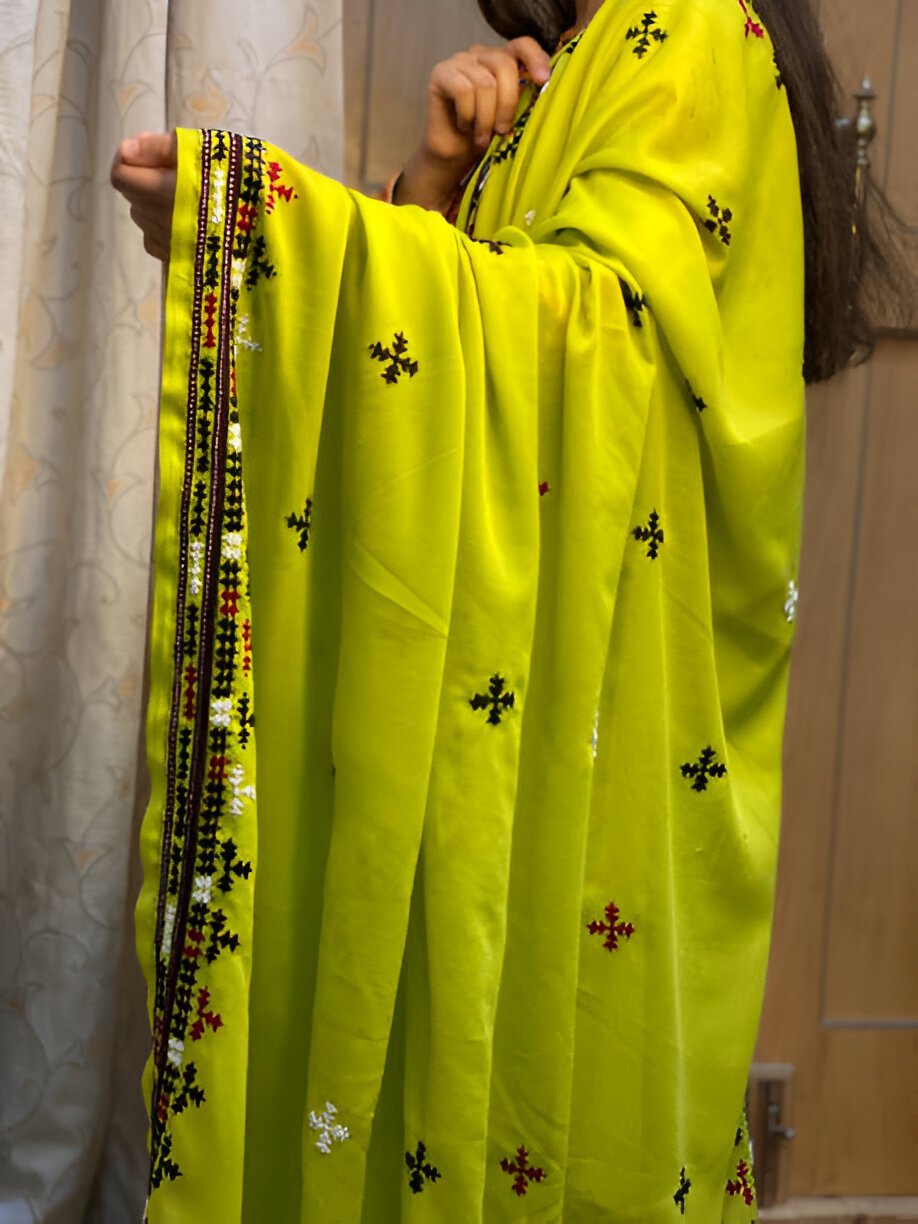
Historical Significance
The dupatta is also called chunni, odhni or orni depending on different parts of India and has been an integral part of Indian attire for many centuries. It had both functional and symbolic purposes historically. It is used to cover the head and shoulders as a sign of modesty which is still being practiced in several parts of India today. With time, however, it turned to be an outlet for artistry with detailed embroidery works, beadwork among other embellishments.
Types of Heavy Work Dupattas
Different forms of these heavy worked scarves exist with each being unique to its region of origin or type of work involved. Some are listed below:
Phulkari Dupatta: Coming from Punjab state Phulkari dupattas bear flamboyant floral embroideries. Silk threads usually carrying out intricate designs often covering the whole fabric make major contributions towards this heaviness found on such shawls.
Banarasi Dupatta: These silk-based Banarasi dupattas come from Varanasi (Banaras) city where they are decorated by silver brocade usually woven into gold thread fabrics. For weddings and other grand functions, people prefer banarasi dupattas because they have heavy zari work.
Chikankari Dupatta: On lighter materials Chikankari is commonly associated with fine white thread embroidery but for a special occasion, one can consider a heavy Chikankari dupatta which has more intricate designs and is further enhanced with sequins, beads and other such ornaments.
Kanjeevaram Dupatta: Kanjeevaram silk dupatta from Tamil Nadu is known for its splendidness as it contains heavy zari work and vibrant colors. Commonly, these shawls are characterized by traditional symbols such as temples, peacocks or flowers.
Bandhani Dupatta: Bandhani is a tie-dye technique done in Gujarat and Rajasthan which include tying and dyeing the fabric to form complex patterns. Heavy Bandhani dupattas might have additional embroidery and mirror work incorporated into them thereby increasing their visual aspect.
Gota Patti Dupatta: Gota patti work which comes from Rajasthan involves appliqué of gold and silver lace on the material. There are various heavy gota patti dupattas that are well known for their intricate designs which are mostly worn by brides.
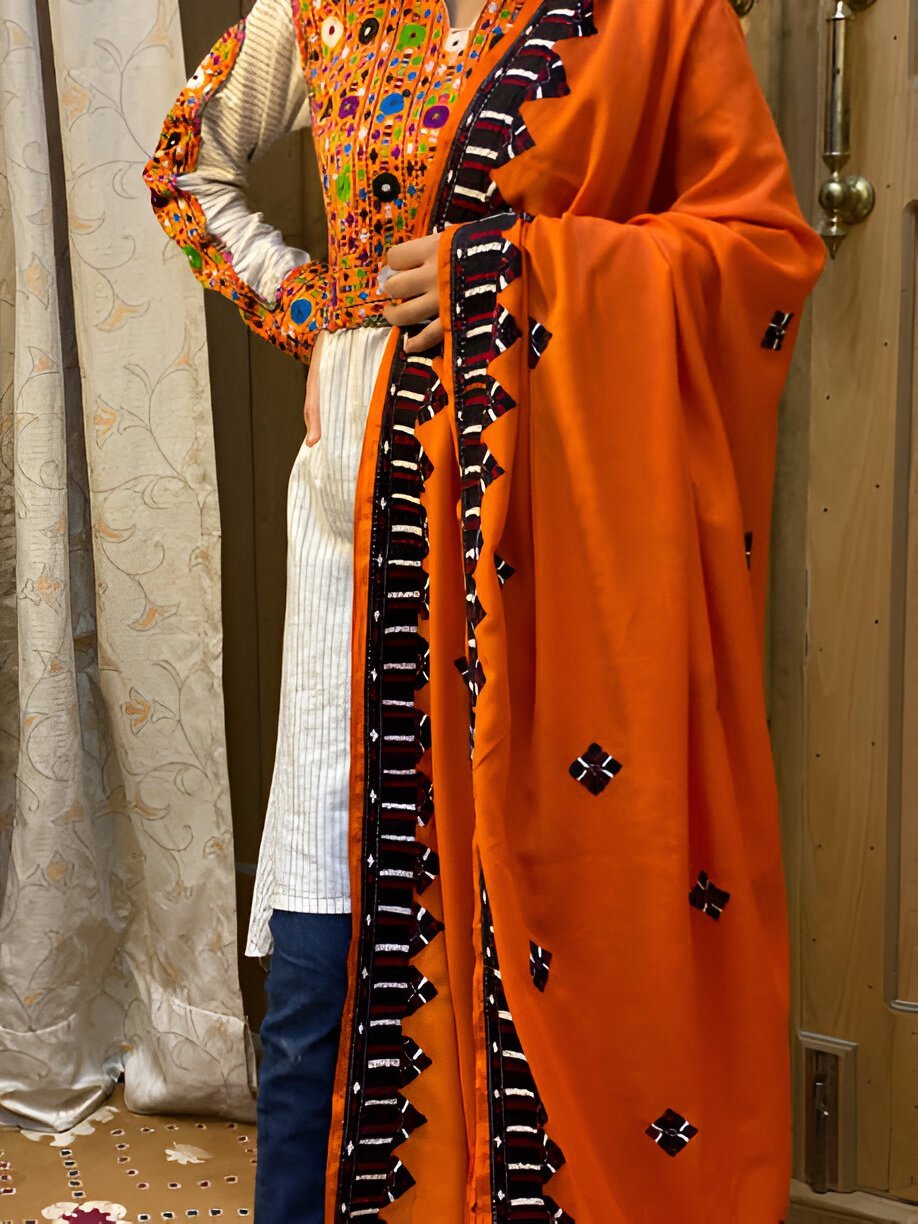
Craftsmanship Behind Heavy Work Dupattas
The making of heavy work dupatta is an art that demands skill, patience, and attention to detail. Below is an insight into how they do it:
Fabric Selection: First things first; select the appropriate fabric that could be either silk, cotton, georgette chiffon or velvet depending on what kind of dupatta you want to make.
Designing & Pattern Making: The craftsmen sketch out the design on the fabric. This can be done freely or using stencils especially when there are complicated patterns.
Embroidery & Embellishments: Depending on the type of work artisans employ diverse methods including hand embroidery, appliqué, beadwork mirror-work sequins among others to bring out the design’s beauty. It takes anywhere between few days to several months depending upon how intricate your pattern is
Final Touches: After the dirty work, dupattas go through the last finishing touches such as hems, tassels, fringes and sometimes even dyed.
Occasions for Heavy Work Dupattas
Versatile heavy work dupattas are ideal for many occasions adding a touch of uniqueness to the wearer’s whole look.

Weddings: These elaborate pieces are an essential part of Indian weddings and brides mostly choose highly embroidered or ornamented dupattas that go well with their bridal lehengas or sarees.
Festivals: Diwali, Eid, and Navratri are some of the festivals celebrated with a lot of color in India. For such celebrations, heavy work dupattas are often chosen to bring elegance and grandeur.
Religious Ceremonies: Poojas and other religious rituals can be enhanced by draping heavy work dupattas around women as a sign of respect and devotion.
Formal Gatherings. Statement pieces needed in functions like receptions, parties, cultural shows where often than not they are paired with plain clothes to help them stand out more on their own.
Fashion Shows. Nowadays too heavy work dupattas have found their way onto fashion ramp walks. Modern designers combining both old traditions into new designs show how multipurpose these fabrics can be throughout time.
Contemporary Trends
Heavy work dupattas have also undergone much change as fashion evolves. Apart from traditional designs which continue to remain popular among people, contemporary trends have introduced newer elements and styles like:
Fusion Fashion: This is one trend that has been embraced by the young generation where they combine traditional heavy work dupattas with modern outfits like jeans or palazzos shorts even dresses.
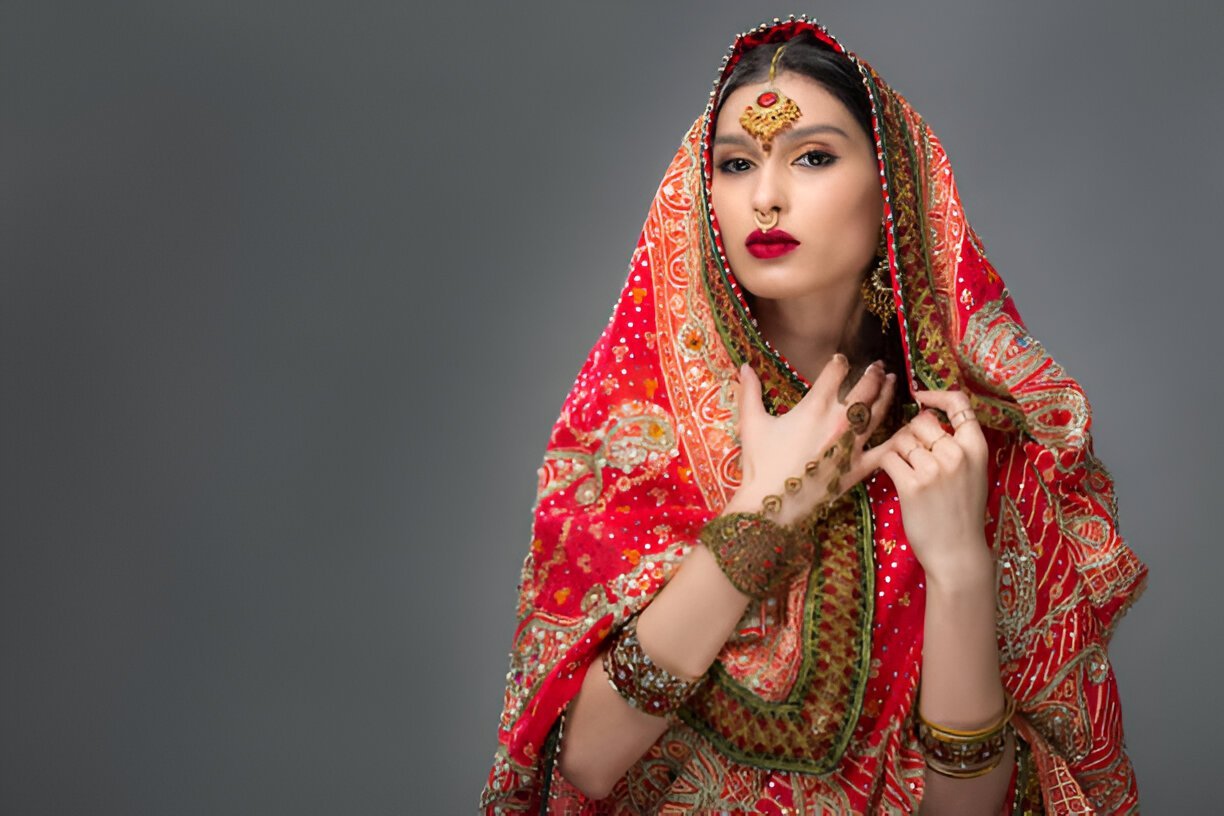
Minimalist Heavy Work. Though it may sound ironic but this term refers to simply designed heavily worked clothes which do not appear so flashy but still must involve sophisticated illustrating skills.
Sustainable Fashion: Many designers today create heavy work dupattas using eco-friendly materials and techniques, particularly as a result of increased awareness about sustainable fashion. These include the use of organic fibers and natural dyes.
Custom Designs: This new wave has seen many people opt for custom-made heavy work dupattas which have specific motifs, initials or symbols that have sentimental meaning to them.
Digital Influence: Heavy work dupattas are among the items that social media like Instagram has brought into global limelight. Such pieces are often displayed by fashion influencers or celebrities who encourage their followers to appreciate this form of traditional art.
Caring for Heavy Work Dupattas
Since heavy work dupattas are very detailed and made from delicate fabrics, they need careful handling:
Storage. Place it in a cool dry place away from direct sunlight having wrapped it in muslin or cotton fabric to avoid any damage.
Cleaning. Dry cleaning is recommended for heavy work dupattas because if washed at home, water and detergents would harm embroidery and embellishments on them.
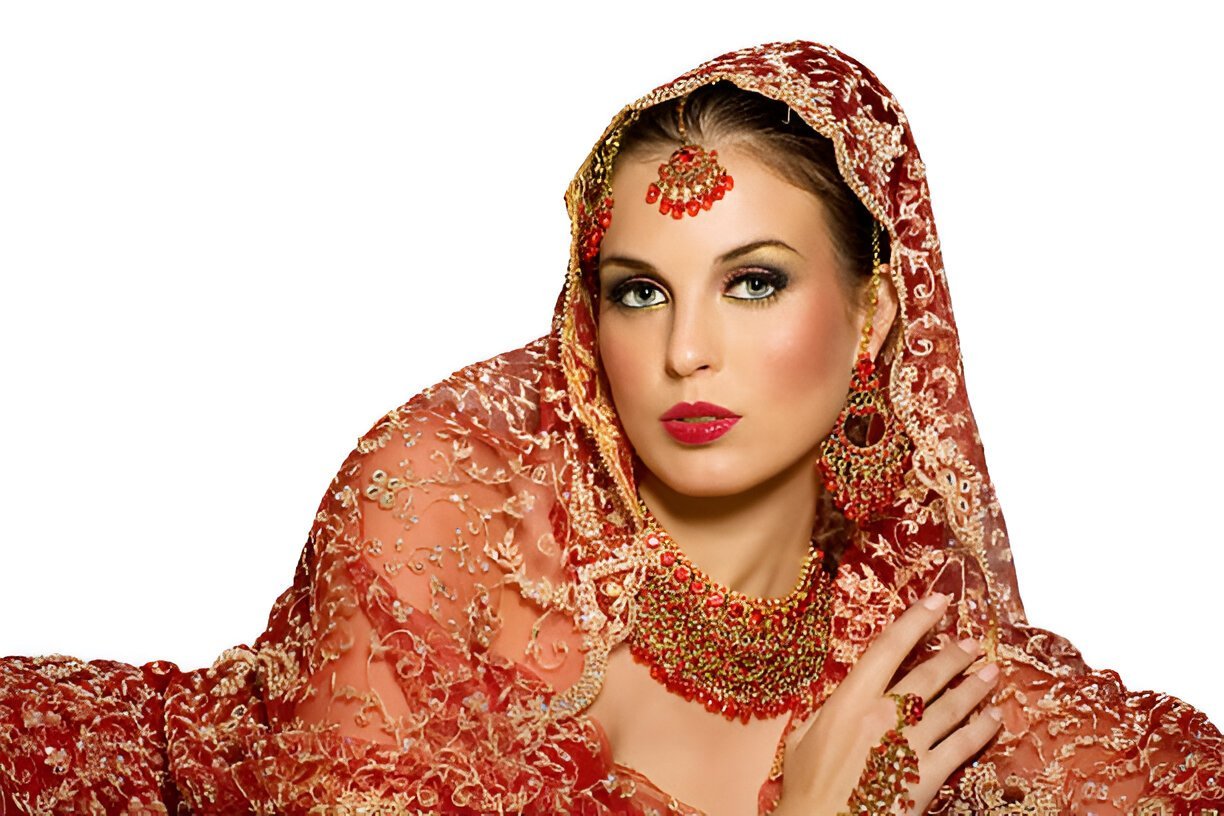
Handling. Whenever you adorn or handle a heavy work dupatta, make sure your hands are clean without oiling substances such as lotions which can stain the material. Be gentle so as not to snag it or leave tears behind.
Ironing: If necessary, iron the back side of the dupatta at low heat setting so as not to destroy the decorations on it. Also putting cloth in between is good to avoid damaging anything with an iron straight onto fabric
The end
The heavy work dupatta is not just a piece of fabric; it represents Indian culture, labor, and grace. It does not matter whether it’s Phulkari from Punjab or Banarasi from Varanasi, or even Gota Patti from Rajasthan, each dupatta has a tale to tell of heritage and craft. This remains as an evergreen addition in fashion that changes with time but still maintains its original luster. To Indian users, it is much more than just another fashion add-on but rather a cherished treasure which reflects the rich cultural heritage of their nation.





